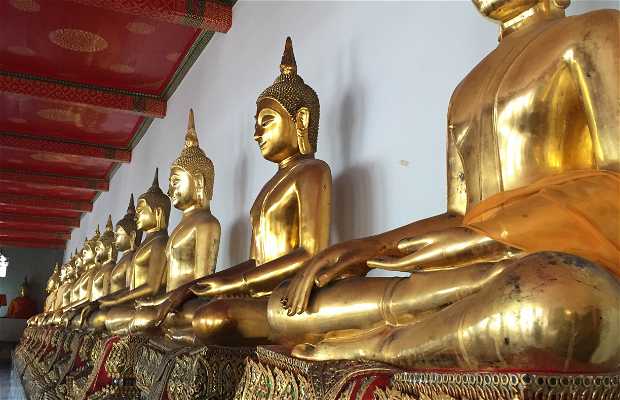Carlos Olmo
Really Big Buda for Such a Small Building
Poor Buddha, though smiling, he must suffer from a lot of stress in such a tiny building. I was reminded of a giant Gulliver. Rama III ordered the construction of this impressive reclining 46 meter long Buddha, with a 15 meter head and 3'x5' feet. Located at just a 10 minute walk from the Royal Palace, I recommend a visit. Located in Wat Pho, the oldest and largest temple in Bangkok, with over a thousand images of Buddha from Lantiguas Ayutthaya and Sukhothai as its capital. The images near the Buddha's feet show him passing into nirvana. Inlaid with pearls and 108 prints depicting scenes from Buddha's life.
For 20 baths (half a euro), they give you some money without any real value, so you can throw them into the metal bowls distributed along the back part. You have to parcel them out carefully because you'll only get the blessing if you throw money into each bowl.
Read more



+8




































